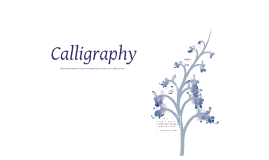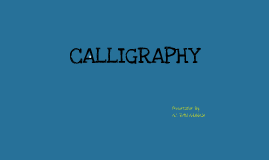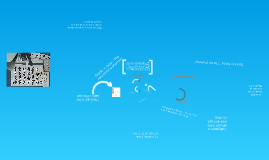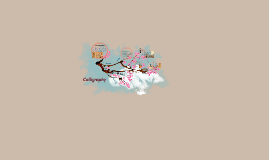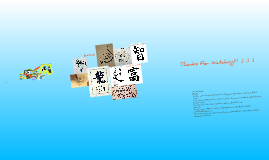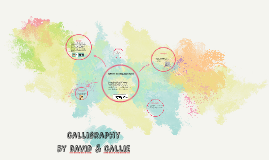Calligraphy
Transcript: Calligraphy is a visual art related to writing.A contemporary calligraphic practice can be defined as, "the art of giving form to signs in an expressive, harmonious, and skillful manner". Back more than 3000 years to Qin Dynasty. The development and spread of writing, driven by progress and growing requirements of society and the introduction of brush and ink, set the stage for the gradual evolution of the unique art of Chinese writing. Clerical script Through calligraphy, Chinese intellectuals gave form to individual thoughts, personal morals, virtues, and innermost sentiments. In the works of ancient masters, we can see the calligraphers' personalities at work: the unrestrained freedom of Wang Hsi-Chih, the graceful, upright style of General Yen Jen-Ching, the unruly indulgence of the monk Huai Su, the easy flow of emotion and talent of Su Shu, and the elegance and delicate beauty of Emperor Huei-Zong of the Sung Dynasty, and etc. Chinese calligraphy As the literati labored to cast off the yoke of the Confucian ethical code of the Han Dynasty, there was more space for bold imagination in the arts, and great masters of calligraphy, such as Wang Hsi-Chih, gained prominence and won the title of the "Calligrapher-Sage . Semi-cursive script Calligraphy in Qin dynasty The calligraphic tradition of East Asia originated and developed from China. There is a general standardization of the various styles of calligraphy in this tradition.Calligraphy has also led to the development of many forms of art in China, including seal carving, ornate paperweights, and inkstones. The earliest extant examples of Chinese writing are the inscriptions that appear on so-called oracle bones (animal bones and turtle shells) and on bronze vessels, the oldest of which date back to the Shang Dynasty. Evolution of the calligraphy what is calligraphy Later, amidst the literary and military accomplishments of the Tang Dynasty, calligraphy became part of the imperial examinations, and famous court ministers such as Yen Jen-Ching was renowned as calligraphers who were highly trusted and regarded by the emperors. Calligraphy From the elaborate, pictographic character and the Seal Script to the spontaneous exuberance of the Cursive Script, strokes, dots and expressions are laid down to form complex pictures of abstract beauty. Ink flows out of the Chinese brushes like notes of music, floating with cadence in a stream of intertwined rhythm and melody. Regular script Cursive script






